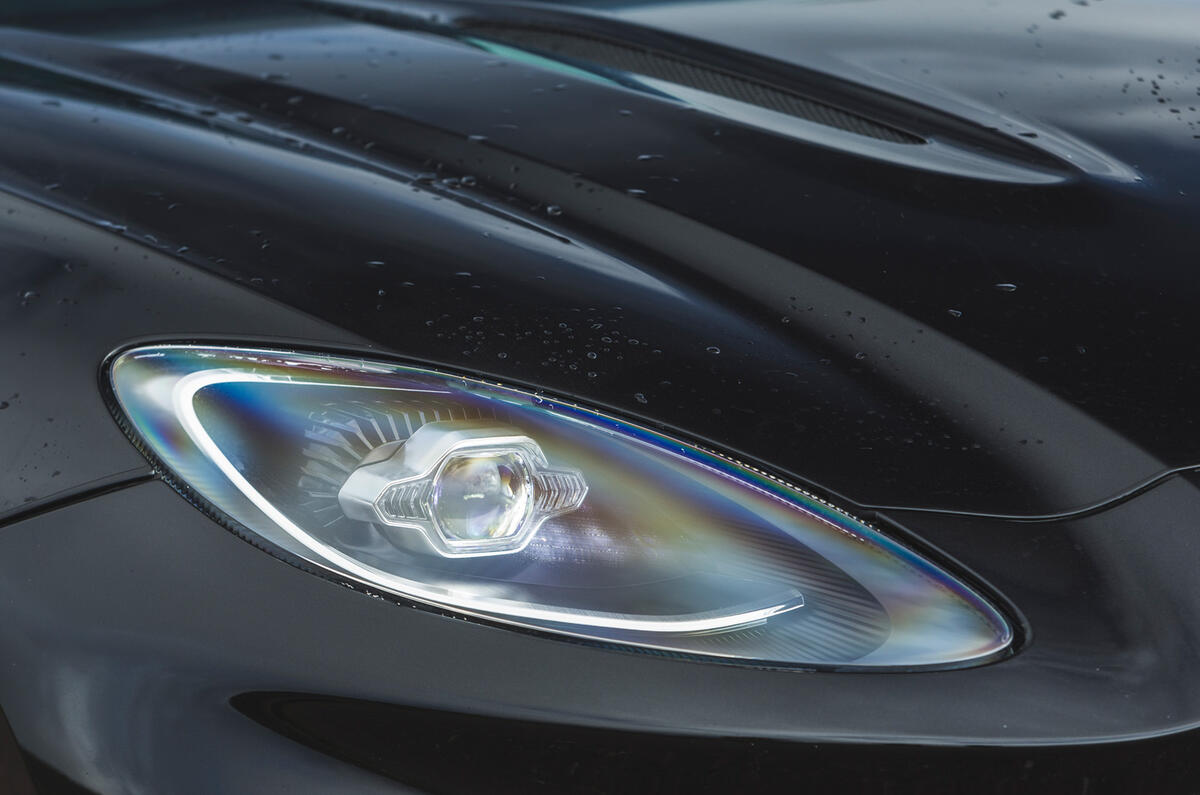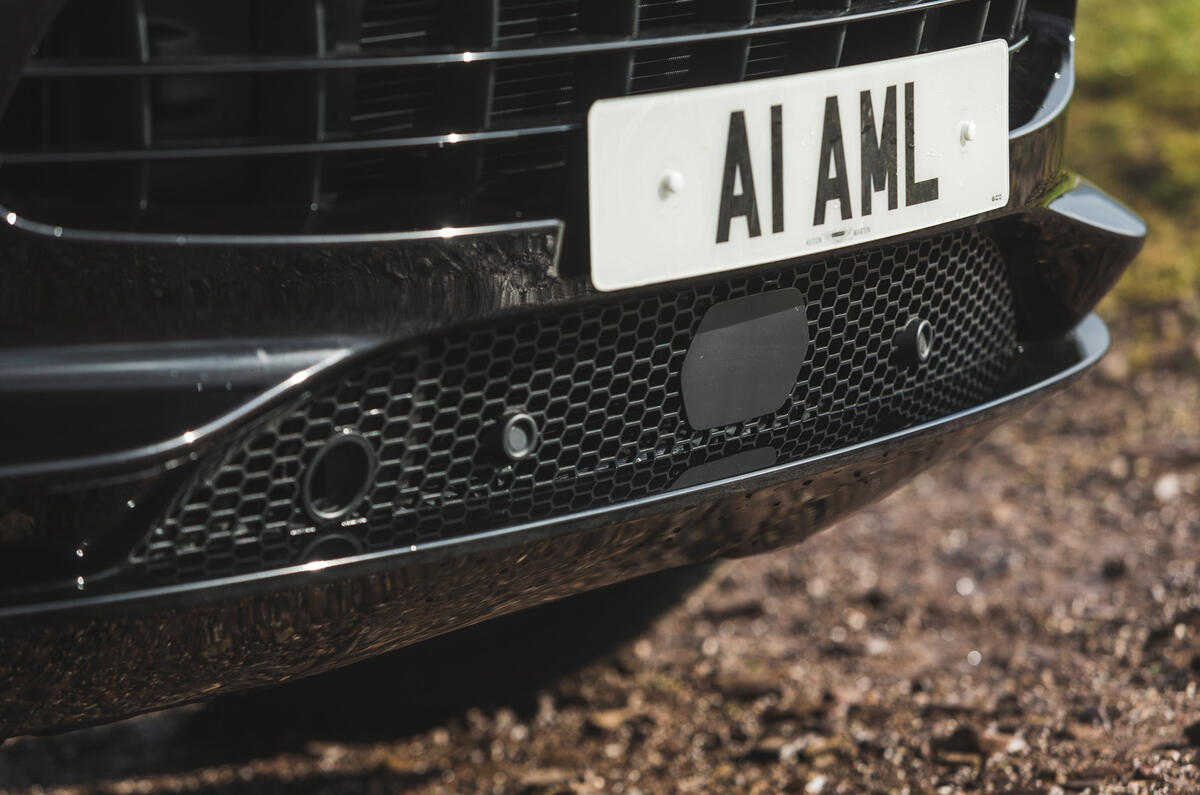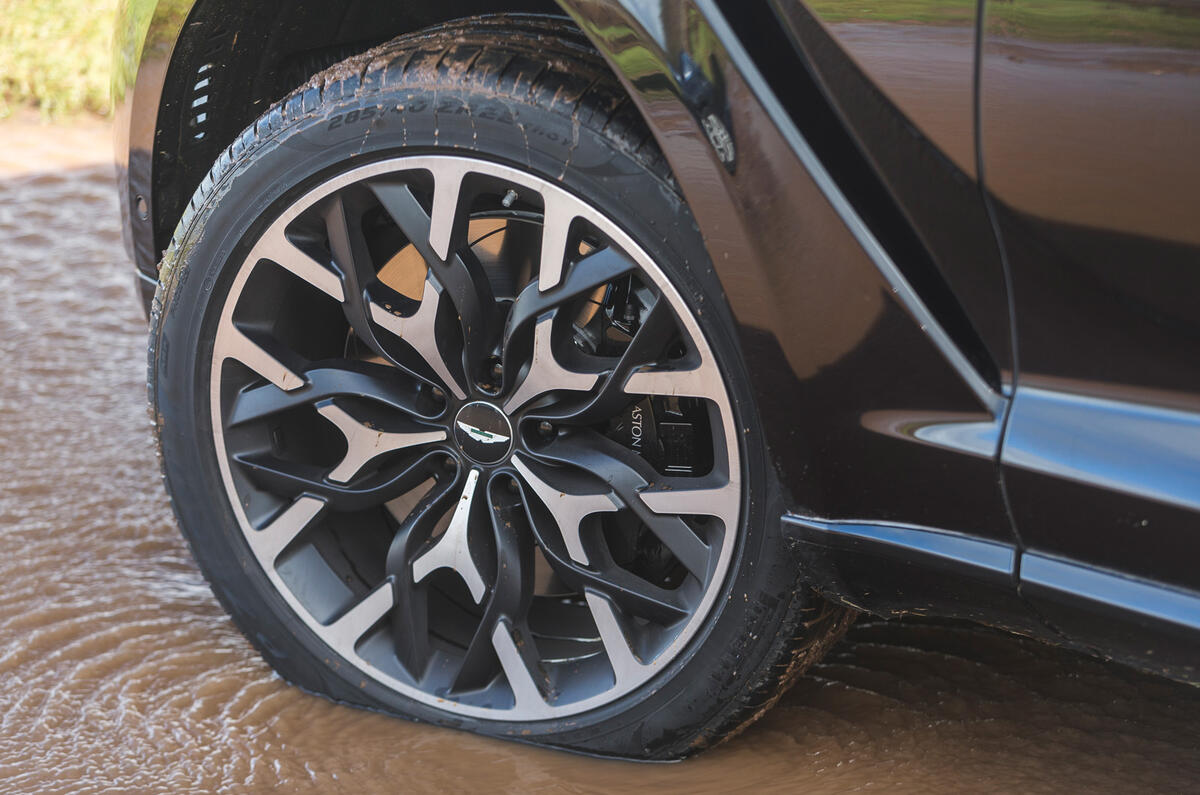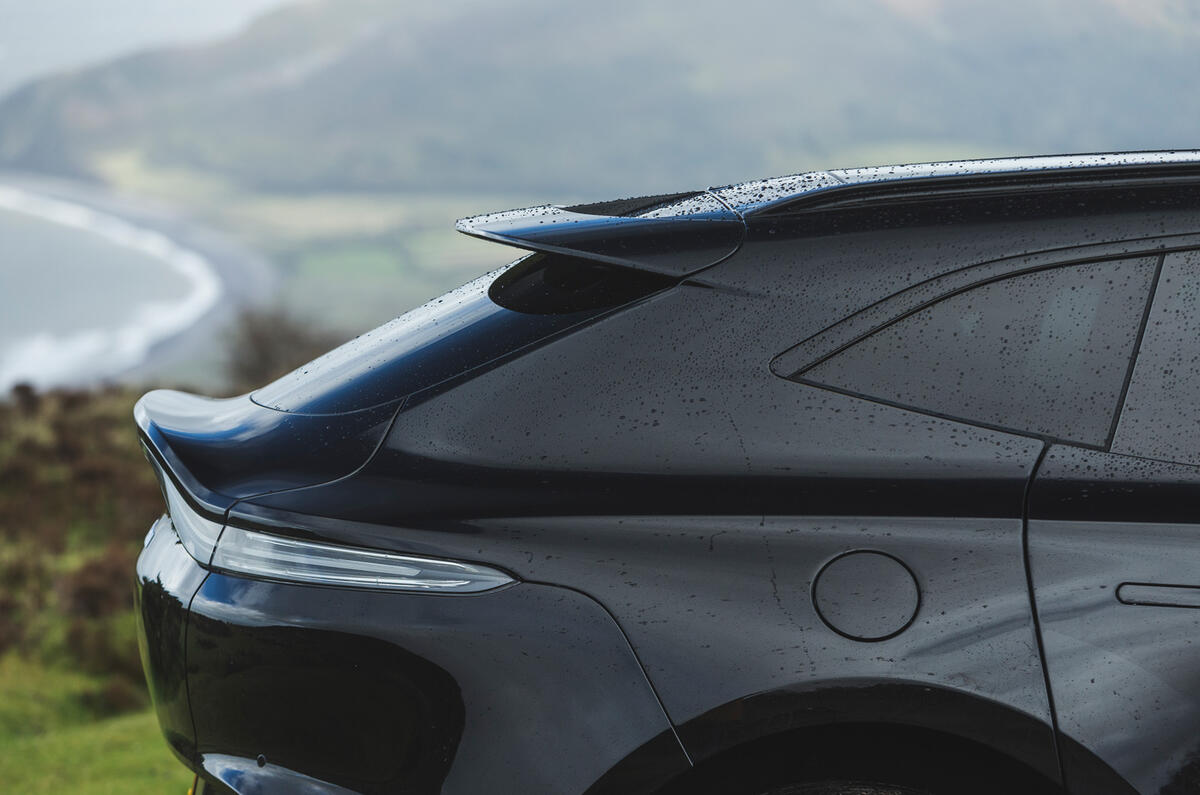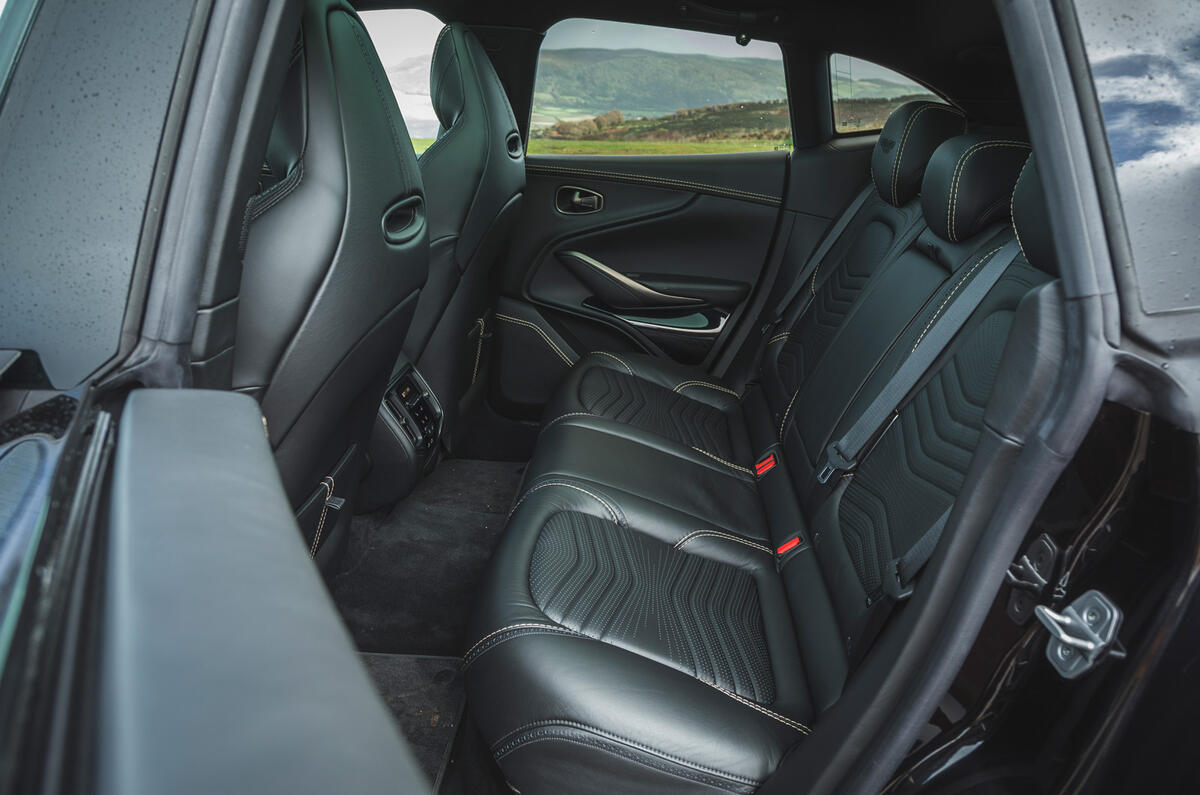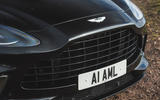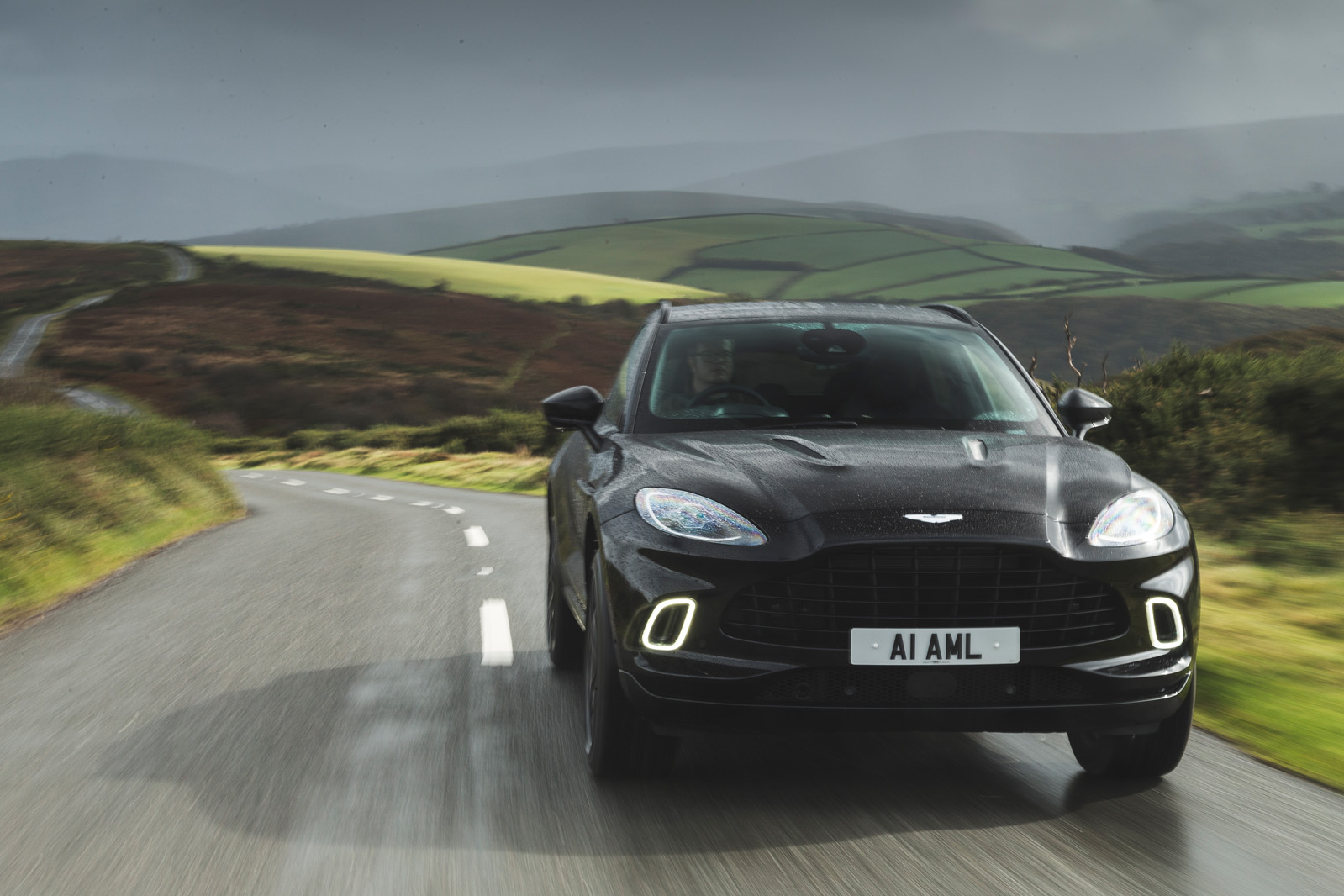An SUV the DBX may be, but this is a car you address and enter in a manner that’s quite atypical of the breed. The slightly fiddly pop-out door handle is a clue that you’re climbing aboard a car whose ornate form has been considered to be at least as important as its function, as are its frameless doors and low-cut A-pillar and roofline.
Look down as you swing open the door and you’ll see a cabin floor that is perfectly flat all the way to where you expect to find a raised sill but won’t; you’ll also notice that the outer surface below is completely covered by the lower lip of the door. Stepping up and in is therefore really easy, and your clothes are kept free of any muck and grime as you do it.
The DBX’s cabin is attractive and elaborately finished – although not all that roomy. The car has really quite lavish leather upholstery from ceiling to carpet, with brogue-style patterning on the seats and eye-catching raised and pinched details on the fascia. Even the bottoms of the door cubbies are lined with hide.
Aston boasts that the car offers rear seat passengers as much space as those up front, and that the driving position was set to allow space for a fifth percentile woman, a 95th percentile man and anything in between. But our testers mostly agreed that the car’s front seat cushions were higher-set than perhaps they ought to have been, and also that the header rail loomed a little too close to the eyeline for some. Outright head room in either row would likely be marginal for anyone taller than 6ft 4in.
The car’s second row is fitted out for three passengers, although it would be something of a squeeze if they were all adults. For four adults of average height in all, however, the DBX’s cabin would be a very comfortable and accessible place in which to travel – a target Aston Martin the old four-door Rapide certainly missed. The boot is particularly long and wide, is functionally furnished with load-retention features and can be expanded for carrying capacity through rear seats that fold 40/20/40.
Aston Martin DBX infotainment and sat-nav
There’s no missing the fact that the DBX’s infotainment system is built on old Mercedes architecture, even despite a graphical reskin that lends the software a distinctly Aston Martin theme.
The 10.25in TFT screen’s graphics are quite basic compared with the more overtly high-tech systems found in the likes of the Lamborghini Urus and Bentley Bentayga. It doesn’t respond to touch but is instead controlled by a rotary dial on the centre console.
For the most part this works quite intuitively and makes the process of navigating from one menu to the next a relatively straightforward procedure, although it’s not ideal for interacting with smartphone-mirroring programmes such as Apple CarPlay – touchscreens are undoubtedly preferable here.
Such outdated infotainment software does look and feel out of place in the cabin of a high-end performance SUV – particularly one that’s as design-focused as the DBX.







